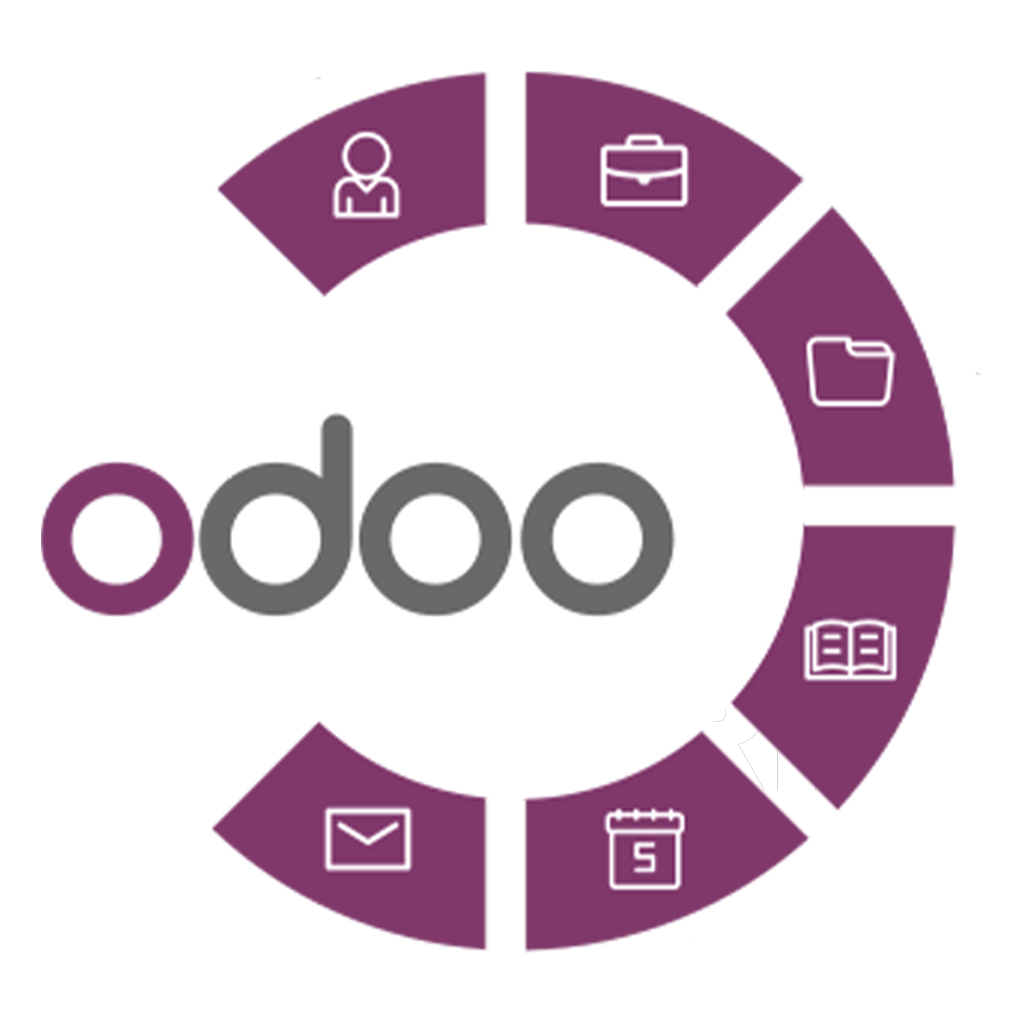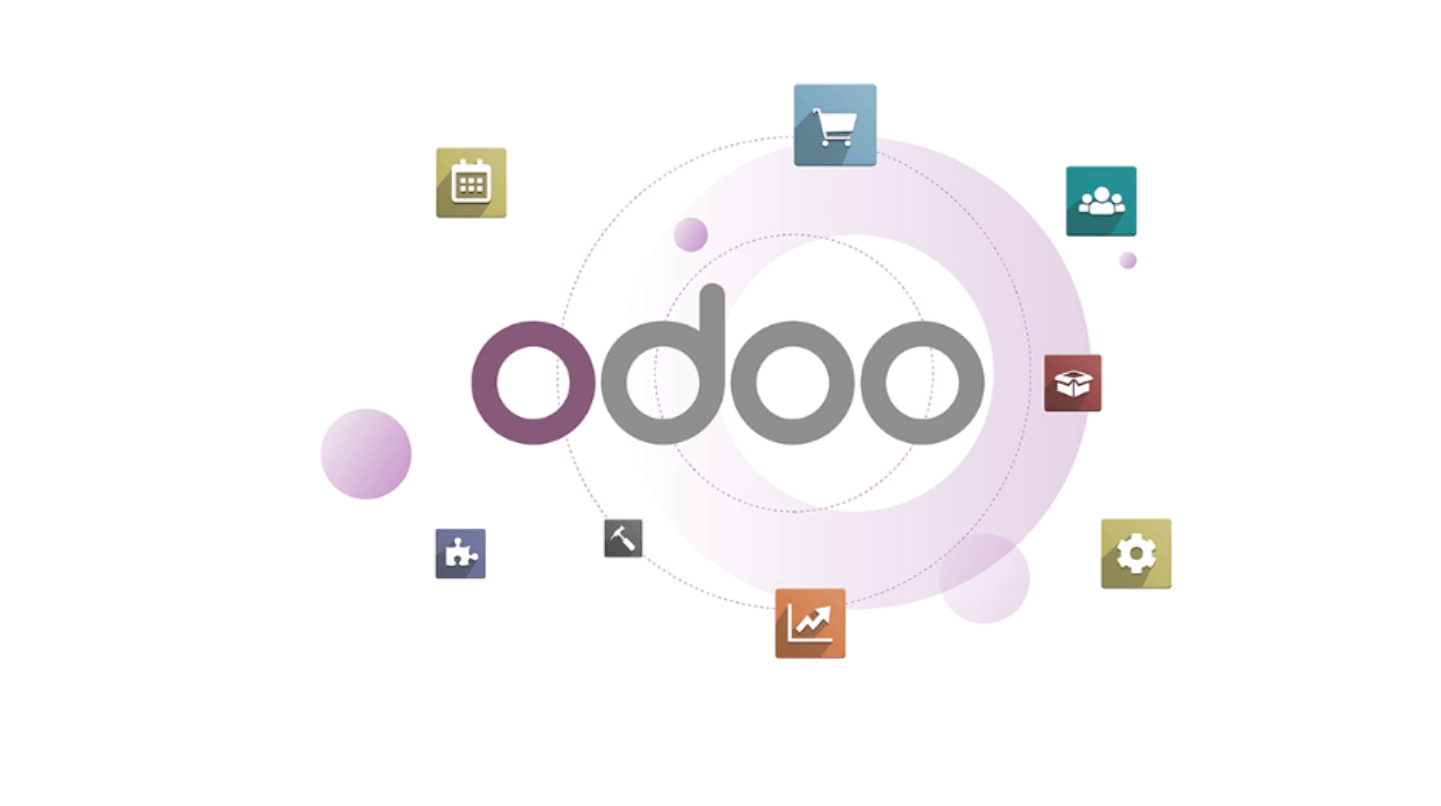Understanding Manufacturing in Odoo

Overview of Odoo as an ERP Solution
Odoo, formerly known as OpenERP, is an open-source ERP software suite that encompasses a wide array of business applications, including CRM, inventory management, accounting, human resources, and manufacturing. Launched in 2005, Odoo has evolved into one of the most popular ERP solutions globally, owing to its modular architecture, flexibility, and user-friendly interface.
One of the distinguishing features of Odoo is its modular structure, allowing businesses to select and integrate only the modules relevant to their operations. This modular approach not only enhances scalability but also facilitates customization to meet specific business requirements. Additionally, Odoo’s open-source nature empowers developers to extend its functionality and contribute to its ongoing development, fostering a vibrant community ecosystem.
Introduction to the Manufacturing Module

The manufacturing module in Odoo is designed to streamline production processes, optimize resource utilization, and enhance overall operational efficiency. Whether it’s discrete manufacturing, process manufacturing, or mixed-mode manufacturing, Odoo offers robust tools to manage diverse production environments seamlessly.
Key Features and Functionalities
- Bill of Materials (BoM) Management: The BoM functionality allows users to define the list of components, raw materials, and sub-assemblies required to manufacture a finished product. Odoo supports multi-level BoMs, enabling complex manufacturing processes to be accurately modeled and executed.
- Work Center Management: Odoo facilitates the management of work centers, which represent physical locations where manufacturing operations take place. Users can define work centers, specify their capacities, and schedule production activities efficiently.
- Manufacturing Orders: With Odoo’s manufacturing orders, users can plan, track, and manage production activities effectively. From creating production orders to scheduling tasks and monitoring progress, the manufacturing module provides comprehensive control over the entire production workflow.
- Inventory Integration: Tight integration with Odoo’s inventory management module ensures seamless synchronization of stock levels across production, warehousing, and distribution channels. Real-time visibility into inventory enables better demand forecasting and inventory optimization.
- Quality Control: Quality management is integral to manufacturing operations, and Odoo offers robust quality control features to maintain product standards and compliance. Users can define quality checks, set acceptance criteria, and track inspection results throughout the production process.
- Reporting and Analytics: Odoo provides powerful reporting and analytics tools that offer insights into manufacturing performance, resource utilization, and production costs. Customizable dashboards and KPIs enable stakeholders to make data-driven decisions and drive continuous improvement initiatives.
Integration with Other Odoo Modules

One of the key strengths of Odoo lies in its seamless integration capabilities across different modules. The manufacturing module integrates seamlessly with other Odoo modules, such as inventory management, procurement, sales, accounting, and CRM, providing end-to-end visibility and control over the entire value chain.
- Inventory Management: Integration with Odoo’s inventory management module ensures accurate tracking of raw materials, work-in-progress inventory, and finished goods across the supply chain. This integration enables automatic updates of inventory levels based on production activities, sales orders, and procurement processes.
- Procurement: The manufacturing module is closely integrated with Odoo’s procurement module, allowing for efficient procurement of raw materials, components, and supplies required for production. Users can create purchase orders directly from manufacturing orders, ensuring timely availability of materials to support production schedules.
- Sales and CRM: Integration with Odoo’s sales and CRM modules enables seamless coordination between production planning and customer demand. Sales orders are automatically linked to manufacturing orders, allowing for efficient order fulfillment and customer satisfaction.
- Accounting: Odoo’s manufacturing module integrates with the accounting module to ensure accurate cost allocation and financial reporting. Costs associated with production, including material costs, labor costs, and overheads, are automatically captured and reflected in the accounting system, facilitating cost analysis and profitability assessment.
Setting Up Manufacturing Processes
-
Configuring Manufacturing Operations and Work Centers
The first step in setting up manufacturing processes is configuring operations and work centers. This involves determining the sequence of operations required to transform raw materials into finished products and identifying the resources needed at each stage. Work centers, such as assembly lines, machining stations, and packaging areas, are organized to optimize workflow and minimize production bottlenecks. Factors such as equipment capabilities, labor skills, and space constraints must be considered when designing the layout of work centers. By optimizing manufacturing operations and work centers, companies can enhance productivity, reduce lead times, and improve overall efficiency.
-
Defining Bill of Materials (BOMs)
A Bill of Materials (BOM) is a comprehensive list of all the components, sub-assemblies, and raw materials required to manufacture a product. Creating an accurate and detailed BOM is essential for planning production schedules, estimating costs, and managing inventory levels effectively. Each item in the BOM should include relevant information such as part numbers, descriptions, quantities, and sourcing details. Additionally, BOMs may also specify alternative or substitute components to accommodate variations in supply availability or customer requirements. By defining BOMs accurately, manufacturers can streamline procurement processes, minimize material waste, and ensure consistent product quality.
-
Managing Routings and Work Orders
Routings define the sequence of operations and the associated work centers or machines required to manufacture a product. They specify the workflow from raw material input to finished product output, including any intermediate steps such as machining, assembly, and testing. Work orders, on the other hand, are instructions issued to the shop floor personnel detailing the specific tasks to be performed, materials to be used, and deadlines to be met for each production run.
Effectively managing routings and work orders is essential for optimizing resource utilization, minimizing idle time, and meeting production targets. Advanced planning and scheduling techniques, such as finite capacity scheduling and priority-based sequencing, can help manufacturers optimize routings and work orders to maximize efficiency and minimize lead times.
-
Creating Product Variants and Managing Product Lifecycle
In today’s dynamic market, manufacturers often need to offer product variants to cater to diverse customer preferences and market demands. Product variants may differ in features, specifications, or configurations while sharing a common base design or platform.
Managing product variants involves defining the configurable options, creating variant-specific BOMs and routings, and ensuring compatibility with existing manufacturing processes. Additionally, manufacturers must also manage the entire product lifecycle, from initial design and development to production, distribution, and eventual phase-out or obsolescence. Effective lifecycle management involves continuous product improvement, cost optimization, and timely response to market feedback and changing regulatory requirements.
Production Planning and Scheduling
Demand Forecasting and Capacity Planning
At the nucleus of effective production planning lies accurate demand forecasting coupled with prudent capacity planning. Demand forecasting entails the analysis of historical data, market trends, consumer behavior, and external factors to predict future demand patterns. Leveraging advanced analytics, machine learning algorithms, and market intelligence facilitates more precise forecasts, enabling businesses to align production levels with anticipated demand.
Capacity planning, on the other hand, involves assessing the organization’s production capabilities against forecasted demand. It encompasses evaluating existing infrastructure, equipment, manpower, and technological capabilities to ascertain the optimal capacity required to meet projected demand. By striking a balance between demand and capacity, businesses can avoid underutilization or overutilization of resources, thereby enhancing operational efficiency and cost-effectiveness.
Generating Production Schedules
Once demand forecasts and capacity requirements are determined, the next crucial step is generating production schedules. Production scheduling involves allocating resources, defining task sequences, and setting timelines to ensure the timely completion of production orders. Various methodologies such as finite capacity scheduling, just-in-time scheduling, and advanced planning and scheduling (APS) systems are employed to create efficient production schedules tailored to the specific needs of the organization.
Finite capacity scheduling considers the capacity constraints of resources such as machinery, labor, and inventory, preventing overloading and bottlenecks in production processes. Just-in-time scheduling aims to minimize inventory holding costs by synchronizing production with demand, thereby reducing lead times and improving responsiveness. APS systems integrate advanced algorithms and real-time data to optimize production schedules dynamically, considering factors like resource availability, production priorities, and lead times.
Optimizing Resource Allocation
Efficient resource allocation is paramount for maximizing productivity and minimizing production costs. It involves assigning resources such as labor, machinery, materials, and inventory in a manner that optimizes utilization while adhering to production schedules and quality standards. Advanced planning tools and optimization techniques play a pivotal role in streamlining resource allocation processes, ensuring optimal utilization of available resources.
Resource allocation strategies may involve cross-training employees to enhance flexibility, implementing lean manufacturing principles to minimize waste, and deploying predictive maintenance techniques to optimize equipment uptime. Furthermore, technologies such as IoT-enabled sensors, RFID tracking systems, and cloud-based inventory management solutions facilitate real-time monitoring and control of resources, enabling proactive decision-making and resource optimization.
Handling Unforeseen Disruptions and Delays
Despite meticulous planning, manufacturing processes are susceptible to unforeseen disruptions and delays arising from various sources such as equipment breakdowns, supply chain disruptions, workforce shortages, and quality issues. Effective mitigation strategies are essential to minimize the impact of these disruptions and ensure continuity of operations.
One approach is to build resilience into production systems by diversifying suppliers, maintaining safety stocks, and establishing alternative production routes. Additionally, implementing predictive maintenance programs and leveraging condition monitoring technologies can help preempt equipment failures and minimize unplanned downtime. Moreover, fostering a culture of continuous improvement and empowering frontline workers to identify and address issues in real-time enhances agility and responsiveness in handling disruptions.
Furthermore, the adoption of Industry 4.0 technologies such as artificial intelligence, big data analytics, and digital twins enables predictive and prescriptive capabilities, facilitating proactive risk management and decision-making. By leveraging real-time data and predictive analytics, businesses can anticipate potential disruptions, model various scenarios, and devise contingency plans to mitigate risks effectively.
Procurement and Inventory Management
Streamlining Procurement Processes with Odoo
Odoo, a comprehensive suite of business applications, offers a robust solution for streamlining procurement processes. Through its integrated modules, Odoo provides functionalities for automating purchase requisitions, vendor management, purchase order creation, and invoice processing. By centralizing procurement activities within a single platform, Odoo enhances efficiency and transparency while reducing manual errors and administrative overhead.
Key features of Odoo’s procurement module include:
- Purchase Requisition Automation: With Odoo, employees can generate purchase requisitions directly from the system, specifying required items, quantities, and preferred vendors. This streamlines the procurement workflow by eliminating manual paperwork and accelerating the approval process.
- Vendor Management: Odoo enables organizations to maintain a comprehensive database of vendors, including contact information, pricing agreements, and performance metrics. By facilitating vendor evaluation and selection, Odoo helps companies identify reliable suppliers and negotiate favorable terms.
- Purchase Order Management: Odoo allows for the creation and tracking of purchase orders seamlessly. Users can generate POs, send them to vendors electronically, and monitor order status in real-time. This visibility enhances control over procurement activities and enables timely decision-making.
- Invoice Processing: Odoo integrates invoice processing functionalities, enabling automatic matching of invoices with corresponding purchase orders and receipts. This automation reduces manual intervention, accelerates payment cycles, and minimizes the risk of discrepancies.
Odoo empowers organizations to streamline procurement processes, optimize vendor relationships, and drive cost savings through automation and efficiency.
Inventory Management Best Practices
Effective inventory management is critical for maintaining optimal stock levels, minimizing holding costs, and meeting customer demand. Implementing best practices in inventory management helps organizations achieve operational excellence and competitive advantage. Some key best practices include:
- ABC Analysis: Classifying inventory items based on their value and consumption patterns enables organizations to prioritize resources and focus on high-value items. ABC analysis helps optimize inventory replenishment decisions and allocate resources effectively.
- Demand Forecasting: Leveraging historical sales data, market trends, and customer insights, organizations can forecast demand accurately and plan inventory levels accordingly. By anticipating demand fluctuations, companies can prevent stockouts and minimize excess inventory.
- Inventory Optimization: Balancing inventory levels to meet customer demand while minimizing carrying costs requires continuous optimization. Techniques such as economic order quantity (EOQ) and reorder point (ROP) calculations help determine optimal inventory levels and reorder quantities, considering factors such as lead time and demand variability.
- Supplier Collaboration: Collaborating closely with suppliers enables organizations to improve inventory visibility, reduce lead times, and enhance supply chain responsiveness. Establishing strategic partnerships with key suppliers facilitates Just-in-Time (JIT) inventory practices and reduces reliance on excess inventory.
Just-in-Time (JIT) Inventory Strategies
JIT inventory management aims to minimize inventory holding costs while ensuring timely fulfillment of customer orders. By synchronizing production and inventory levels with demand, organizations can achieve significant cost savings and operational efficiencies. Key principles of JIT inventory strategies include:
- Lean Manufacturing: JIT is closely associated with lean manufacturing principles, emphasizing waste reduction, continuous improvement, and value stream optimization. By eliminating non-value-added activities and optimizing production processes, organizations can achieve higher productivity and flexibility.
- Kanban Systems: Kanban systems facilitate visual management of inventory levels and production workflows, enabling real-time monitoring and control. By using visual cues such as Kanban cards or electronic signals, organizations can trigger production or procurement activities based on actual demand, thereby minimizing excess inventory and lead times.
- Supplier Integration: JIT inventory strategies rely on close collaboration with suppliers to ensure timely delivery of components and materials. Establishing long-term partnerships with reliable suppliers and implementing vendor-managed inventory (VMI) programs enables organizations to synchronize supply chain activities and reduce inventory holding costs.
- Continuous Improvement: Continuous improvement is integral to JIT philosophy, encouraging organizations to identify and eliminate inefficiencies systematically. Through initiatives such as Kaizen events and quality circles, companies can foster a culture of continuous learning and innovation, driving operational excellence and customer satisfaction.
Real-Time Tracking of Inventory Levels and Stock Movements
Real-time tracking of inventory levels and stock movements is essential for maintaining accurate inventory records, optimizing order fulfillment processes, and preventing stockouts or overstock situations. Advanced inventory management systems, such as Odoo, offer real-time visibility into inventory across multiple locations and enable proactive decision-making. Key benefits of real-time inventory tracking include:
- Improved Inventory Accuracy: Real-time tracking minimizes discrepancies between physical inventory and system records, reducing the risk of stockouts or excess inventory. By capturing inventory movements instantaneously, organizations can maintain accurate inventory counts and fulfill customer orders promptly.
- Enhanced Order Fulfillment: With real-time inventory visibility, organizations can optimize order fulfillment processes and allocate inventory efficiently. By identifying available stock across multiple locations or warehouses, companies can fulfill orders from the nearest or most suitable location, reducing lead times and shipping costs.
- Inventory Optimization: Real-time tracking enables organizations to monitor inventory levels continuously and adjust replenishment strategies dynamically. By analyzing demand patterns and consumption trends in real-time, companies can optimize inventory levels, minimize carrying costs, and maximize inventory turnover.
- Proactive Issue Resolution: Real-time inventory tracking facilitates early detection of issues such as stockouts, overstocks, or discrepancies, enabling proactive resolution. By implementing automated alerts and notifications, organizations can address inventory-related issues promptly, preventing disruptions to operations and customer service.
Quality Control and Assurance
-
Implementing Quality Control Checks
Quality control checks encompass a systematic approach to inspecting and evaluating products or services to ensure they meet predefined standards. Implementing quality control checks involves establishing protocols and procedures to monitor various stages of production or service delivery.
These checks may include visual inspections, measurements, testing, and verification against predetermined criteria. By integrating quality control checks into every phase of the production process, organizations can identify and rectify defects or deviations promptly, thereby preventing potential quality issues from escalating and reaching customers.
-
Defining Inspection Criteria and Tolerances
Central to effective quality control is the clear definition of inspection criteria and tolerances. Inspection criteria delineate the specific attributes or characteristics that products or services must possess to be deemed acceptable. These criteria are often derived from industry standards, customer requirements, and internal quality benchmarks. Tolerances, on the other hand, establish the acceptable deviation from these criteria before a product or service is deemed defective. Defining precise inspection criteria and tolerances enables organizations to maintain consistency and uniformity in their output while accommodating inherent variability in production processes.
-
Tracking Non-conformities and Implementing Corrective Actions
Despite rigorous quality control measures, non-conformities may still occur, necessitating swift identification and resolution. Tracking non-conformities involves systematically documenting instances where products or services fail to meet specified standards or requirements.
This may involve recording defects, deviations, customer complaints, or process inefficiencies. Once identified, organizations must implement corrective actions to address the root causes of non-conformities and prevent recurrence. Corrective actions may include process adjustments, rework, training programs, or modifications to quality control procedures. By proactively addressing non-conformities, organizations can uphold their commitment to delivering high-quality products and services while fostering a culture of continuous improvement.
-
Continuous Improvement Through Data Analysis and Feedback Loops
Achieving excellence in quality control and assurance requires a commitment to continuous improvement. Data analysis plays a crucial role in this endeavor, providing insights into process performance, trends, and areas for enhancement. By leveraging data from quality control checks, organizations can identify patterns, root causes of defects, and opportunities for optimization.
Moreover, establishing feedback loops enables stakeholders to provide input on quality issues, challenges, and improvement suggestions. This collaborative approach empowers organizations to adapt swiftly to changing market dynamics, customer preferences, and technological advancements, driving ongoing refinement and innovation.
Traceability and Compliance
Ensuring Traceability Throughout the Production Process
Traceability refers to the ability to track the movement of products and components at various stages of production, distribution, and consumption. In essence, it involves creating a transparent pathway that allows stakeholders to trace the origins, processes, and destinations of goods. Achieving traceability necessitates the implementation of robust systems that capture data and information pertaining to each phase of production. From sourcing raw materials to manufacturing, packaging, and distribution, every step must be meticulously documented and accessible.
The adoption of technologies such as barcoding, RFID (Radio Frequency Identification), and blockchain has revolutionized traceability in manufacturing. Barcodes and RFID tags enable real-time tracking of products, while blockchain ensures immutable record-keeping, enhancing transparency and accountability. Through these technologies, manufacturers can swiftly identify the source of any anomalies or defects, facilitating targeted interventions and minimizing risks.
Compliance with Industry Standards and Regulations
Compliance forms the bedrock of responsible manufacturing practices, ensuring that products meet the requisite standards for quality, safety, and sustainability. In an increasingly regulated environment, adherence to industry standards and governmental regulations is not merely a legal obligation but also a moral imperative. Manufacturers must stay abreast of evolving regulatory frameworks and proactively align their operations with prevailing norms.
ISO (International Organization for Standardization) standards, such as ISO 9001 for quality management and ISO 22000 for food safety, serve as guiding principles for manufacturers striving for excellence. Similarly, regulatory bodies like the FDA (Food and Drug Administration) and the European Union’s REACH (Registration, Evaluation, Authorization, and Restriction of Chemicals) impose stringent requirements to safeguard public health and environmental integrity. Compliance entails rigorous documentation, testing, and audits to ensure that products conform to prescribed standards and regulations.
Serialization and Batch Tracking
Serialization involves assigning unique identifiers, such as serial numbers or product codes, to individual units or batches of products. This enables precise identification and tracking of each item throughout its lifecycle. By implementing serialization protocols, manufacturers can enhance traceability, streamline inventory management, and combat counterfeiting and illicit trade.
Batch tracking complements serialization by grouping products manufactured under similar conditions or within a specified timeframe. In the event of quality issues or recalls, batch tracking facilitates targeted interventions, allowing manufacturers to isolate and rectify affected batches swiftly. Moreover, it enables manufacturers to analyze production data, identify trends, and optimize processes for greater efficiency and consistency.
Recall Management and Product Recalls
Despite stringent quality control measures, product recalls remain an inevitable reality in manufacturing. Whether due to contamination, defects, or safety concerns, recalls can tarnish brand reputation, incur financial losses, and jeopardize consumer trust. Effective recall management is therefore essential to mitigate risks and safeguard public safety.
Central to recall management is the ability to swiftly identify and isolate affected products. This necessitates robust traceability systems that enable manufacturers to trace the precise origin and distribution of defective items. Once identified, manufacturers must communicate proactively with regulatory agencies, distributors, and consumers, issuing clear and concise recall notices. Timely action, transparency, and accountability are paramount in mitigating the impact of recalls and restoring consumer confidence.
Challenges and Future Directions
While traceability and compliance offer myriad benefits, implementing and maintaining these systems pose formidable challenges for manufacturers. High upfront costs, interoperability issues, and resistance to change are common barriers to adoption. Moreover, the proliferation of counterfeit goods, supply chain disruptions, and cybersecurity threats further complicate efforts to uphold traceability and compliance.
Looking ahead, advancements in technology hold promise for overcoming these challenges and enhancing the efficacy of traceability and compliance initiatives. Artificial intelligence, machine learning, and IoT (Internet of Things) devices offer new avenues for real-time monitoring, predictive analytics, and automated decision-making. Likewise, decentralized technologies like blockchain promise enhanced data security, integrity, and transparency across supply chains.
Integration with External Accounting Software:
Accounting plays a pivotal role in business operations, and integrating Odoo with external accounting software streamlines financial processes, enhances accuracy, and provides real-time insights. Whether it’s QuickBooks, Xero, or other popular accounting platforms, Odoo offers seamless integration capabilities. By synchronizing data between Odoo’s modules and the accounting software, organizations eliminate redundant data entry tasks, minimize errors, and ensure consistency across financial records. This integration facilitates automated invoicing, expense tracking, reconciliation, and financial reporting, empowering businesses to make informed decisions and maintain compliance effortlessly.
-
Connecting with Third-Party Logistics Providers:
Efficient logistics management is essential for optimizing supply chain operations and meeting customer expectations. Odoo’s integration with third-party logistics (3PL) providers enables businesses to streamline order fulfillment, inventory management, and shipping processes.
By seamlessly exchanging data between Odoo’s inventory and purchase modules and 3PL systems such as FedEx, UPS, or DHL, companies gain real-time visibility into inventory levels, shipment status, and delivery tracking. This integration enhances order accuracy, reduces shipping costs, and accelerates order processing, thereby improving customer satisfaction and loyalty.
-
Seamless Data Exchange with Suppliers and Customers:
Collaboration with suppliers and customers is vital for sustaining business growth and fostering mutually beneficial relationships. Odoo facilitates seamless data exchange with external stakeholders, enabling organizations to streamline procurement, sales, and communication processes.
Through integration with supplier portals and customer relationship management (CRM) systems, Odoo ensures timely access to product information, pricing, orders, and customer feedback. This integration enhances transparency, facilitates order management, and strengthens partnerships, driving operational efficiency and customer satisfaction.
-
Leveraging APIs for Custom Integrations:
While Odoo offers a comprehensive suite of modules to address diverse business needs, organizations may require custom integrations to meet specific requirements or integrate with niche systems. Odoo’s Application Programming Interfaces (APIs) provide developers with the flexibility to create custom integrations and extend the platform’s functionality. Whether it’s integrating with industry-specific software, IoT devices, or proprietary systems, Odoo’s APIs enable seamless data exchange and interoperability. By leveraging APIs, businesses can tailor Odoo to their unique workflows, automate business processes, and unlock new opportunities for innovation and growth.
Conclusion
Odoo Manufacturing module offers a comprehensive solution for businesses looking to streamline their manufacturing operations and stay competitive in today’s market. By leveraging its advanced features and capabilities, businesses can optimize efficiency, reduce costs, and improve overall productivity. With careful planning and implementation, Odoo can truly revolutionize manufacturing processes and drive long-term success for businesses of all sizes.
Production orders can be scheduled in Odoo by accessing the Manufacturing module, selecting the ‘Planning’ option, and then using the Gantt chart or other scheduling tools to allocate resources and set timelines for production orders.
Yes, Odoo supports multi-level manufacturing processes, allowing users to create hierarchical BOMs with multiple levels of components and subassemblies.
Work Centers represent specific locations or machines where manufacturing operations take place. They define the capacity, efficiency, and availability of resources for production.
The progress of manufacturing orders can be tracked in Odoo through various tools such as the Gantt chart, Kanban views, and reporting features that provide real-time updates on the status of production orders.
Yes, Odoo allows for batch and serial number tracking, enabling users to trace the production and distribution history of individual units or batches of products.








